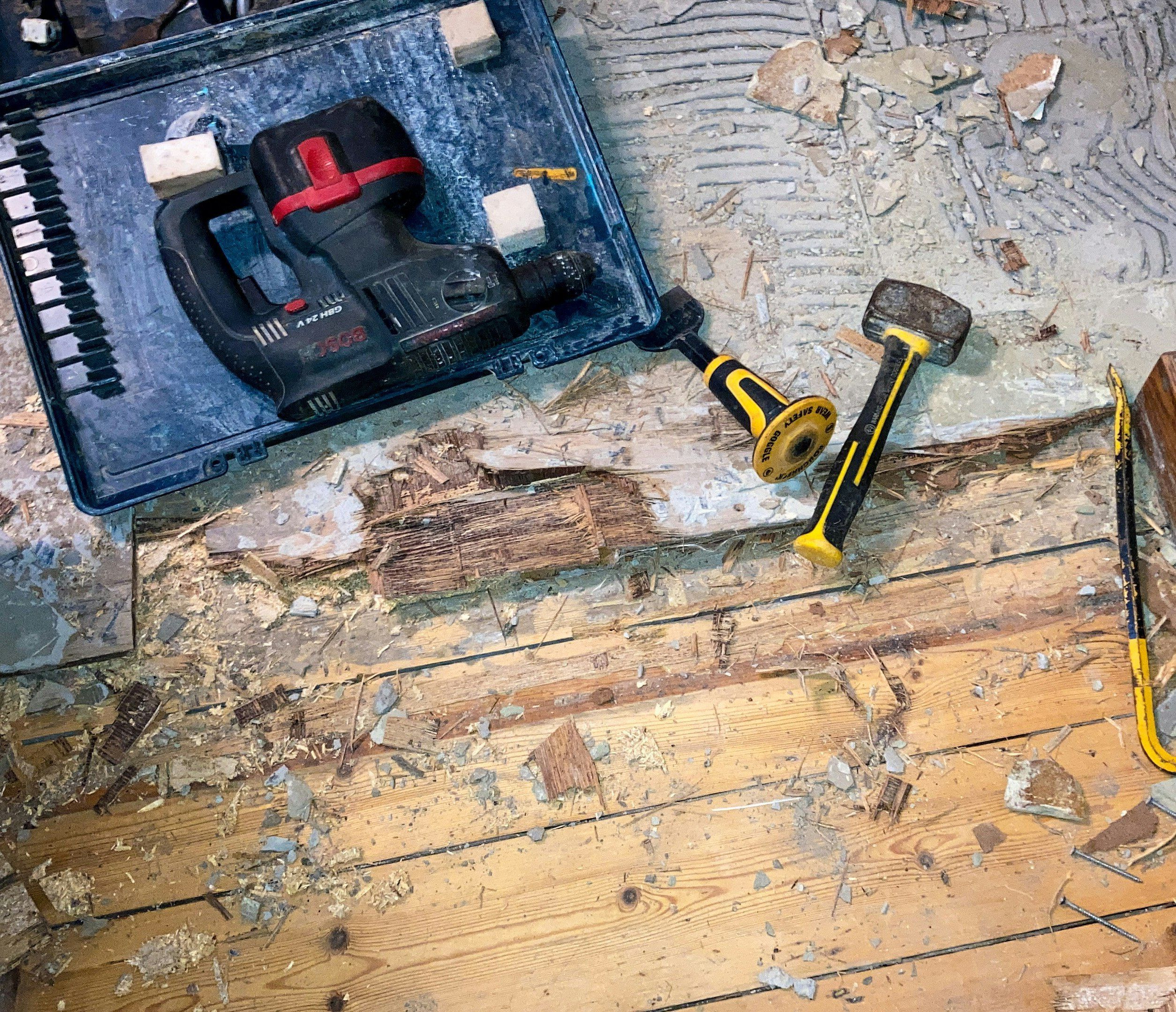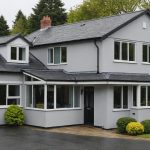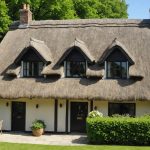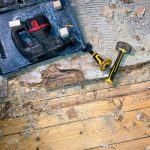Historic Tudor homes are treasures of UK architecture, yet they often struggle with energy inefficiency. Upgrading their energy systems can feel daunting, as it may threaten their original charm. However, modern solutions exist that respect heritage while enhancing comfort and reducing energy bills. This guide explores smart strategies to achieve a seamless balance between preserving your home's character and embracing sustainability. Empower your home for today’s world, adding value while honouring its unique story.
Understanding Tudor Architecture and Its Historical Significance
Tudor architecture, a style originating in England during the late 15th century, is renowned for its distinctive features and historical significance. This architectural style is characterised by steeply pitched gable roofs, embellished doorways, and tall, narrow windows with small panes. The use of half-timbering, where the wooden framework is exposed and infilled with wattle and daub or brickwork, is a hallmark of Tudor homes.
A lire aussi : Choosing the Perfect Contractor for Your UK Historical Restoration: A Comprehensive Guide
The historical context of Tudor architecture is deeply intertwined with the Tudor dynasty, spanning from 1485 to 1603. During this period, England experienced significant social and economic changes, which were reflected in the architectural styles of the time. Tudor homes often symbolised wealth and status, as they incorporated elements that were both functional and decorative.
The preservation of Tudor architecture is crucial in maintaining our architectural heritage. These structures offer insights into the craftsmanship and design principles of the past, serving as a tangible connection to history. Efforts to preserve Tudor homes ensure that future generations can appreciate their aesthetic and cultural value. Understanding the historical significance of these architectural styles enriches our appreciation for the past and informs contemporary design practices.
A lire aussi : Choosing the Perfect White Hue for Your UK Coastal Home”s Exterior: A Comprehensive Guide
Assessing Energy Efficiency Needs in Tudor Homes
Understanding the energy efficiency of Tudor homes is crucial for sustainability and cost-effectiveness. Conducting an energy audit is the first step in this process. It identifies areas where energy is being wasted and suggests improvements. Tudor homes, with their historical construction methods, often face unique challenges in this area.
Common energy inefficiencies in Tudor homes include poor insulation due to the half-timbering technique and drafts from tall, narrow windows. These features, while historically significant, can lead to higher energy consumption. An energy audit evaluates these aspects, ensuring that homeowners can make informed decisions about necessary upgrades.
Various tools and methods are available for assessing energy efficiency. Infrared thermography, for example, can detect heat loss areas, while blower door tests measure the home's air tightness. These techniques provide a comprehensive evaluation, highlighting specific areas for improvement.
Addressing energy efficiency in Tudor homes not only enhances their sustainability but also preserves their historical integrity. By understanding and mitigating inefficiencies, homeowners can maintain the aesthetic appeal of their homes while reducing their environmental impact. This balance between preservation and modernisation is key to sustaining these architectural treasures.
Retrofitting Techniques for Energy Efficiency
Improving the energy efficiency of Tudor homes requires careful planning to ensure historical aesthetics are preserved. One effective strategy is enhancing insulation. Traditional half-timbering can be supplemented with modern materials like aerogel or sheep's wool, which offer excellent thermal performance without altering the home's appearance. These materials can be discreetly installed in walls and attics, maintaining the visual integrity of the structure.
For windows, which are often culprits of energy loss, energy-efficient upgrades are available. Homeowners might consider secondary glazing, which involves adding a slim, discreet layer of glass inside the existing window frame. This method retains the original window's look while significantly improving thermal efficiency. Alternatively, specially designed heritage double glazing can be used, which mimics the appearance of traditional glass but offers modern insulation benefits.
Incorporating modern heating systems is another key aspect of retrofitting. Underfloor heating, for instance, can be installed without disrupting the structural fabric of the home. This system provides efficient warmth, reducing reliance on less efficient methods like open fires or radiators. By carefully selecting these retrofitting techniques, homeowners can enhance energy efficiency while respecting the historical significance of their Tudor homes.
Sustainable Materials That Respect Historical Integrity
Incorporating sustainable materials in Tudor homes can enhance energy efficiency while preserving their historical charm. Eco-friendly choices like sheep's wool and aerogel are ideal for insulating walls and attics without compromising the home's aesthetic. These materials provide excellent thermal performance, crucial for maintaining energy efficiency in older structures.
For windows, heritage double glazing offers a sustainable option, mimicking traditional glass while improving insulation. This allows homeowners to maintain the historical appearance of their Tudor homes, a priority in historic preservation efforts. Additionally, using reclaimed wood for repairs and renovations supports sustainability and aligns with the historical context.
Successful integration of these materials can be seen in various case studies. For instance, a Tudor home in Kent utilised sheep's wool insulation, significantly reducing energy costs while maintaining its period features. Similarly, a property in Sussex incorporated aerogel, achieving modern energy standards discreetly.
When sourcing sustainable materials, homeowners should consider local suppliers who specialise in eco-friendly and historically appropriate products. This not only supports local economies but also ensures that the materials align with the architectural integrity of Tudor homes. By prioritising sustainable materials, homeowners can effectively balance modern efficiency with historic preservation.
Navigating Planning Permissions and Regulations
When considering renovations to Tudor homes, understanding the intricacies of planning permissions and building regulations is essential. These homes often fall under heritage conservation, requiring adherence to specific guidelines to preserve their historical significance.
Understanding Local Regulations
Local authorities have established frameworks to guide renovations of historic properties. These regulations ensure that any modifications respect the home's architectural integrity. Homeowners must familiarize themselves with these rules to avoid potential legal issues.
Securing Planning Permission
Securing planning permission involves several steps. First, consult your local planning office to understand specific requirements for your property. Prepare detailed plans of the proposed changes, highlighting how they align with conservation goals. This often includes maintaining the façade and using materials that match the original construction.
Resources for Homeowners
Navigating the approval process can be complex, but resources are available. Local heritage organisations often offer guidance and support. Additionally, hiring a consultant with experience in historic renovations can streamline the process. They can assist in preparing applications and liaising with authorities, ensuring compliance with all regulations.
By understanding and following these steps, homeowners can successfully undertake renovations that enhance their Tudor homes while respecting their historical value.
Balancing Aesthetics with Modern Energy Solutions
Incorporating modern solutions into Tudor homes requires careful consideration to maintain aesthetic preservation. Successful integration involves strategies that discreetly enhance energy efficiency while respecting historical design.
Integrating Modern Solutions
To achieve this balance, homeowners can utilise innovative techniques that remain unobtrusive. For example, installing underfloor heating provides efficient warmth without altering the home's appearance. Similarly, using slimline solar panels on less visible roof sections offers renewable energy benefits without compromising the home's historical look.
Case Studies
Several case studies illustrate successful design integration. A Tudor property in Yorkshire installed secondary glazing that preserved the original window frames' appearance while significantly improving insulation. Another home in Surrey incorporated discreetly placed heat recovery ventilation systems, enhancing air quality without affecting the interior aesthetic.
Expert Tips
Experts recommend a few key approaches for achieving harmony between aesthetic preservation and modernisation:
- Consult professionals experienced in historic renovations to ensure that changes align with conservation principles.
- Prioritise reversible solutions that allow future restoration if needed.
- Select materials and technologies that complement the existing structure, such as heritage-style radiators or period-appropriate light fixtures.
By thoughtfully integrating modern energy solutions, homeowners can enjoy the benefits of improved efficiency while preserving the timeless beauty of their Tudor homes.
Expert Recommendations and Best Practices
Renovating Tudor homes requires a careful balance of preserving historical integrity and enhancing energy efficiency. Expert advice from professionals in historic preservation can be invaluable. They often recommend starting with a thorough assessment of the building's current condition, focusing on areas like insulation and window efficiency.
Insights from Professionals
Professionals often highlight the importance of maintaining original materials and features wherever possible. Renovation tips include using reversible methods, such as adding secondary glazing to windows, which can be removed if needed in the future. This approach preserves the home's character while improving energy efficiency.
Common Pitfalls to Avoid
A common mistake is neglecting to consult with experts early in the renovation process. This can lead to costly errors and damage to the home's historical features. Another pitfall is choosing modern materials that clash with the original design. It's crucial to select materials that complement the existing structure.
Resources for Ongoing Education
For those seeking further guidance, numerous resources are available. Local heritage organisations offer workshops and seminars on best practices. Additionally, online forums and networks provide a platform for exchanging ideas and solutions with other homeowners facing similar challenges. These resources ensure that homeowners stay informed and supported throughout their renovation journey.
Real-Life Case Studies of Tudor Home Renovations
Exploring case studies of Tudor home renovations provides valuable insights into successful upgrades and their impact on both energy efficiency and heritage preservation. These renovation success stories highlight practical examples that can guide homeowners in their own projects.
Detailed Examples of Successful Tudor Home Upgrades
One notable example is a Tudor residence in Warwickshire, where the owners implemented secondary glazing to enhance insulation while maintaining the original window frames. This upgrade significantly reduced energy costs without compromising the home's historical character. Another case in Hertfordshire involved the installation of underfloor heating, providing efficient warmth that seamlessly integrated with the existing structure.
Lessons Learned from Each Case Study
From these projects, key lessons emerge. Firstly, prioritising reversible solutions ensures that any modern interventions can be undone, preserving the home's authenticity. Secondly, engaging with professionals experienced in historic renovations can prevent costly mistakes and ensure adherence to conservation principles.
Impact of Renovations on Energy Efficiency and Heritage Preservation
These renovations demonstrate a successful balance between modernisation and preservation. By carefully selecting materials and techniques, homeowners can achieve enhanced energy efficiency while respecting the architectural integrity of their Tudor homes. These practical examples serve as a blueprint for others seeking to undertake similar projects.
















